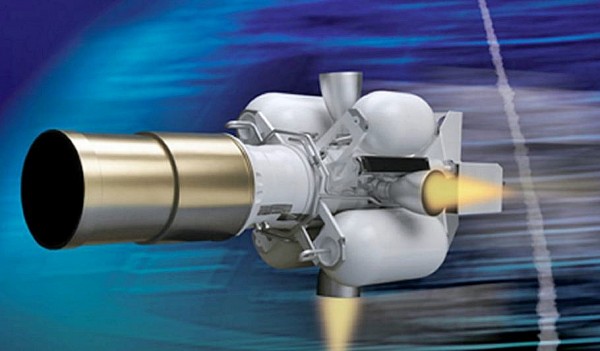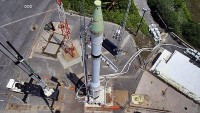Details of US Ballistic Missile Intercept of May 30 Revealed
| Arthur Dominic Villasanta | | Jun 04, 2017 09:10 AM EDT |
(Photo : Raytheon) CE-II EKV.
It turns out the first successful intercept test of the U.S. Ground-Based Midcourse Defense (GMD) national missile defense system against an ICBM-range target last May 30 was a long-delayed test that was supposed to have taken place in the last quarter of 2016.
The popular public perception was this test -- designated FTG-15 by the U.S. Missile Defense Agency (MDA) -- was a quick reaction response to a dire situation caused by North Korea's stubborn development of an intercontinental ballistic missile (ICBM). It wasn't anything of the kind.
Like Us on Facebook
FTG-15 was in the works following the last successful ICBM intercept, FTG-06b, on June 22, 2014.
FTG-15 is notable because it was the first test of the new "CE-II Block-I" version of the Exoatmospheric Kill Vehicle (EKV), which collided with the ICBM target over the Pacific Ocean on May 30.
CE-II Block I EKV is a relatively modest upgrade eliminating some of the known problems with the CE-II EKV and intended to provide improved reliability. MDA plans to build 11 CE-II Block I interceptors -- one for FTG-15 and the other 10 for deployment.
The success of FTG-15 raised to 10 out of 18 (55%) the success rate for the EKVs. No flight intercept tests from 2010 to 2013 were successful.
A few months before the May 30 intercept, MDA Director Vice Admiral James Syring said that because of FTG-15, "... we're getting now out to the long-range and closing velocities that certainly would be applicable from a North Korean or Iran type of scenario."
A fixed date for launching FTG-15 was a relief for the MDA following delays in late 2016 and in January.
The May 30 intercept means it's been three years after the last successful intercept test, FTG-06b. It was also six months before the end of 2017 deadline for deploying a total of 44 Ground-Based Interceptors (GBIs) set by the Department of Defense in March 2013.
TagsGround-based Midcourse Defense, ICBM-range target, FTG-15, U.S. Missile Defense Agency, MDA, ICBM, CE-II Block-I, Exoatmospheric Kill Vehicle, EKV
©2015 Chinatopix All rights reserved. Do not reproduce without permission
EDITOR'S PICKS
-

Did the Trump administration just announce plans for a trade war with ‘hostile’ China and Russia?
-

US Senate passes Taiwan travel bill slammed by China
-

As Yan Sihong’s family grieves, here are other Chinese students who went missing abroad. Some have never been found
-

Beijing blasts Western critics who ‘smear China’ with the term sharp power
-

China Envoy Seeks to Defuse Tensions With U.S. as a Trade War Brews
-

Singapore's Deputy PM Provides Bitcoin Vote of Confidence Amid China's Blanket Bans
-

China warns investors over risks in overseas virtual currency trading
-

Chinese government most trustworthy: survey
-

Kashima Antlers On Course For Back-To-Back Titles
MOST POPULAR
LATEST NEWS
Zhou Yongkang: China's Former Security Chief Sentenced to Life in Prison

China's former Chief of the Ministry of Public Security, Zhou Yongkang, has been given a life sentence after he was found guilty of abusing his office, bribery and deliberately ... Full Article
TRENDING STORY

China Pork Prices Expected to Stabilize As The Supplies Recover

Elephone P9000 Smartphone is now on Sale on Amazon India

There's a Big Chance Cliffhangers Won't Still Be Resolved When Grey's Anatomy Season 13 Returns

Supreme Court Ruled on Samsung vs Apple Dispute for Patent Infringement

Microsoft Surface Pro 5 Rumors and Release Date: What is the Latest?












